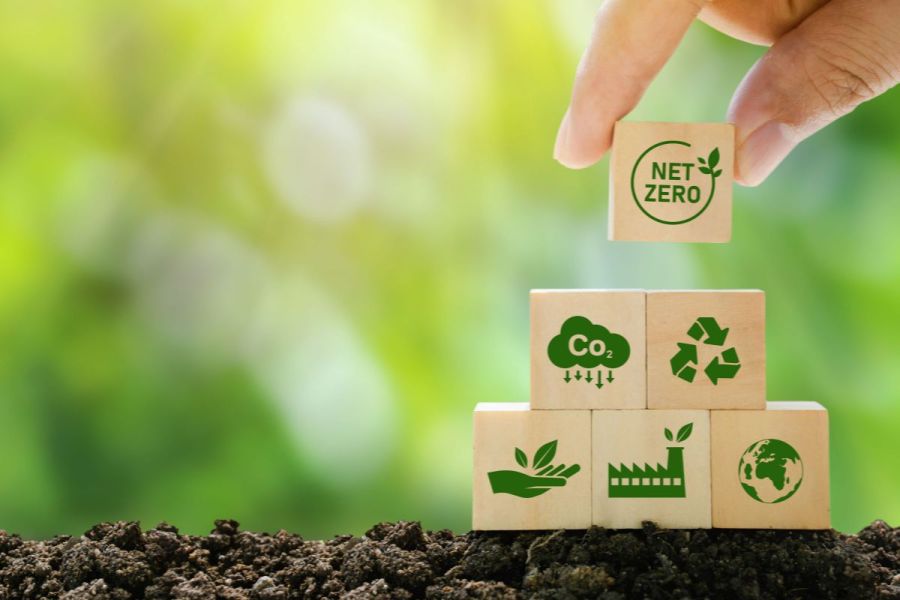Self-sufficiency is a broader issue than just the food grown and consumed within the UK, extending to all other inputs including fertiliser. CPM explores a novel approach which converts urine to a domestically produced fertiliser to close the sustainability loop.
“We have an opportunity to maintain fertility in farming but potentially lower the carbon impact simultaneously.”
By Melanie Jenkins
Agriculture may be familiar with the practice of applying biosolids as fertiliser, but what about urine? It could come as a surprise to some, but using urine as a fertiliser is by no means a new or innovative practice – it’s one firmly lodged in the annuls of time – but is now being reborn.
It’s a by-product of endless uses that have been enacted for millennia. Astronauts recycle it to reclaim water, the Egyptians used it to diagnose diabetes, Assyrian-Babylonian’s could determine pregnancy through it and the Romans used it to fertilise their gardens.
A long-standing practice was to tan animal skins with urine and several-well known (but unprintable in CPM) British idioms were born from the families who were so poor they had to sell their waste this way.
According to the National Institute of Health, each human creates about 1.7litres of urine a day which equates to around 621litres per year. Multiplied by the UK population of 70M, this is in the region of 43.5Bn litres of urine, with the majority of this collected by water companies and made safe for release into public waterways. As a result, there’s huge potential for the nutrients present in urine, such as nitrogen and phosphates, to be utilised as fertiliser.
But now, a consortium of organisations is looking to bring the fallen-from-favour practice of using urine as a fertiliser to UK farmers. “The concept of urine as a fertiliser has been around forever, civilisations have been using it for a long time, but it became less favourable with the large-scale manufacturing of synthetic fertilisers,” explains Green Square Agro Consulting’s Mike Lee.
The consortium, consisting of NPK Recovery, the Royal Agricultural University, Peequal, UK Agri-tech Centres, Pilio and Green Square Agro Consulting, have united with funding from Innovate UK and the Co-Op Carbon Innovation Fund to develop a urine fertiliser that’s safe to use on farms as an alternative to inorganic inputs.
Although applied rates of nitrogen, phosphorous and potassium on UK farms are falling (Agricultural Industries Federation 2023), there’re concerns around fluctuating costs and the carbon impact of artificial fertiliser, which are aspects the consortium hopes to address.
“The project is targeted at providing an alternative sustainable source of fertiliser, recovering nutrients such as nitrogen and phosphorus from urine. Traditional nitrogen fertilisers rely on the Haber Bosch method, an energy intensive process reliant on natural gas, while phosphate fertilisers are produced from fast diminishing sources of mined phosphorus, from areas such as the Saharan region of North Africa,” explains Mike. “The interesting thing is, we have an opportunity to maintain fertility in farming but potentially lower the carbon impact simultaneously, by using a readily available substance. fe because there are different and innovative ways of doing things.”
This is something the consortium is still working to ascertain, as it’ll require further research before it’s able to determine whether capturing phosphates this way will consume less carbon than importing mined phosphates from North Africa, he adds.
Although the project is still in the development stage, some aspects have already begun to take shape, such as through Peequal which has designed a chemical-free female urinal that’s being used at events, including at the London Marathon and Brighton Pride. There’s also a laboratory set up and a head office in Bristol, and in the coming months, the fertiliser will be trialled on crops at the University of the West of England and the Royal Agricultural University, where yield and nutrient uptake will be key measures of success, explains Mike.
But how will the urine be collected, especially as so often there are ‘extra’ elements disposed of in the process? “We’re just collecting urine from staff in the office at the moment and are working on wider-scale modelling,” explains Mike. “Obviously, Peequal has designed its female urinal, but we’re also exploring the options of collecting waste from stadiums, motorway services and festivals because this way urine can be captured in its raw, chemical-free, state. But we do have to flesh out the logistics of how it’ll be collected and distributed.”
The idea with the project is to collect urine locally and install a facility either on-farm or accessible to multiple farms within a set area, where the waste product is then transported to, treated and converted to a useable fertiliser. “The idea is that this’ll be produced on a farm-based scale rather than through a large fertiliser manufacturer.”
One of the challenges the consortium is still working to overcome is how to prevent unwanted elements making their way into the collected urine, but Mike highlights that this doesn’t happen in the volume or frequency that might be expected. “And the team at the University of the West of England testing the urine for any pharmaceuticals and pathogens. However, processes such as long term storage or UV treatment create a sterile product and a study carried out by the University of Hohenheim in Stuttgart, found products made from human urine ‘are viable and safe nitrogen fertilisers’ and ‘didn’t show any risk regarding transmission of pathogens or pharmaceuticals’.”
So how is it processed? Mike explains that they precipitate out the solids into struvite, which is effectively the equivalent of kidney stones, but this doesn’t prevent the fertiliser from being produced in either a solid or a liquid form. And given the increasing switch to liquid fertiliser, he envisages that the product will likely come in liquid form because creating a solid requires more energy as it has to be de-watered.
“There are also benefits of accuracy when using liquid fertiliser and although we’ve seen a far wider adoption of this method in the US and Canada, it’s gaining more traction here.”
According to Mike, the urine fertiliser will be functional with existing equipment and machinery already on farm, so that users wouldn’t have to purchase new kit to coincide with its adoption. “And so far as the accessibility of nutrients in the urine fertiliser by plants goes, this should be similar to that of inorganic inputs because it has significant values of nitrogen, phosphorous and potassium, with as much as 20-22% phosphate, making it similar to a triple super phosphate (TSP) product.
“We’re researching where a urine fertiliser would fit into systems agronomically and believe it would work well in an organic system, but the use of biosolids isn’t favoured by organic organisations, so we’re not sure if there will be take-up from that area.
“However, the product has the potential to feed soil biology, helping to improve soil health and therefore could work well in regen systems because this fits with the concept of taking a natural product, refining and stabilising it, and then using it as part of a healthy farm system.”
The other factor the consortium will address is cost, because this can make or break a product’s adoption potential. “We’re currently focused on refining the process, but we understand cost will have to be comparative with current fertiliser options,” explains Mike.
“But from a practical perspective, we saw enormous spikes in inorganic fertiliser prices a few years ago and macro-economics continue to be influenced by the geo-political turmoil, making us very aware of how fragile the supply chain really is. So from a strategic point of view, creating a system whereby the UK’s producing its own fertiliser resource just makes sense.”
One area which could require further definition is legislation, given that biosolids, due to their origin from human sewage, can only be applied to crops destined for animal feed and not human consumption. “I don’t believe there’s any prohibitive legislation in place apart from the standard fertiliser and crop production code of practice that applies to biosolids, but this is another area we’ll be looking for definition on. However, I don’t see there being any issues with urine fertiliser being used on commodity crops being produced for livestock feed. And the US, France, Switzerland and Sweden are all using urine-based fertilisers.
“Although urine fertiliser is unlikely to completely replace applied urea, especially for those growers wishing to achieve 10t/ha wheat crops, it still has the potential to play a part in reducing emissions, feeding the soil and perhaps reducing the amount of inorganic fertiliser applied,” concludes Mike.
This article was taken from the latest issue of CPM. Read the article in full here.
For more articles like this, subscribe here.
Sign up for Crop Production Magazine’s FREE e-newsletter here.




